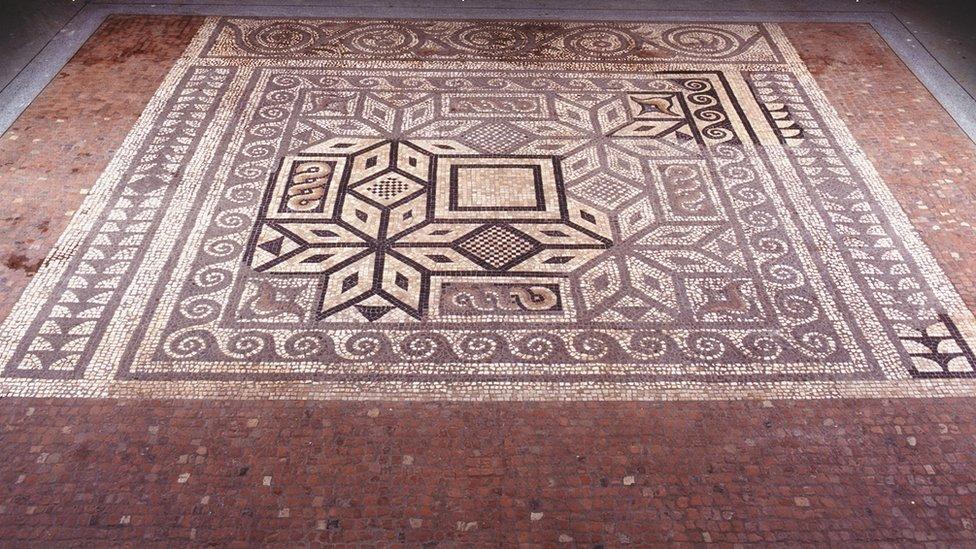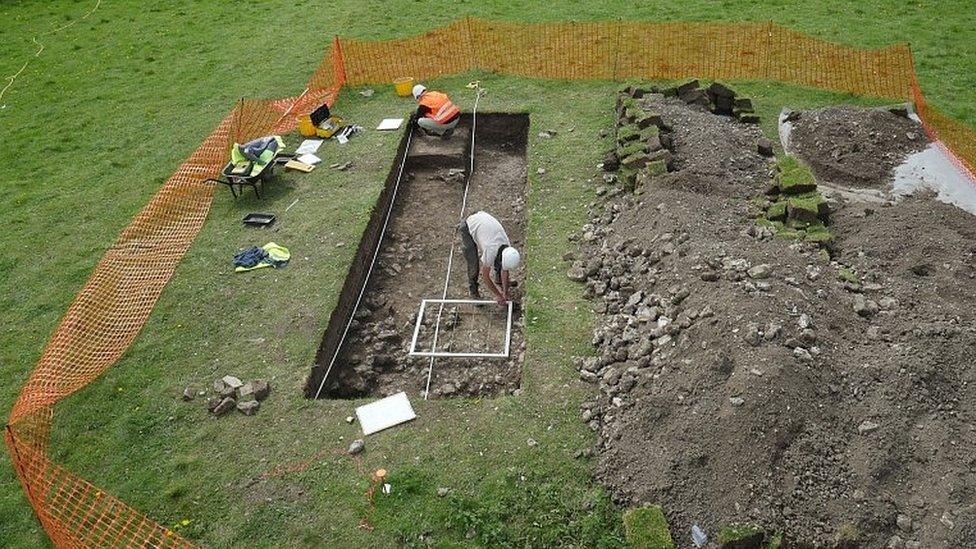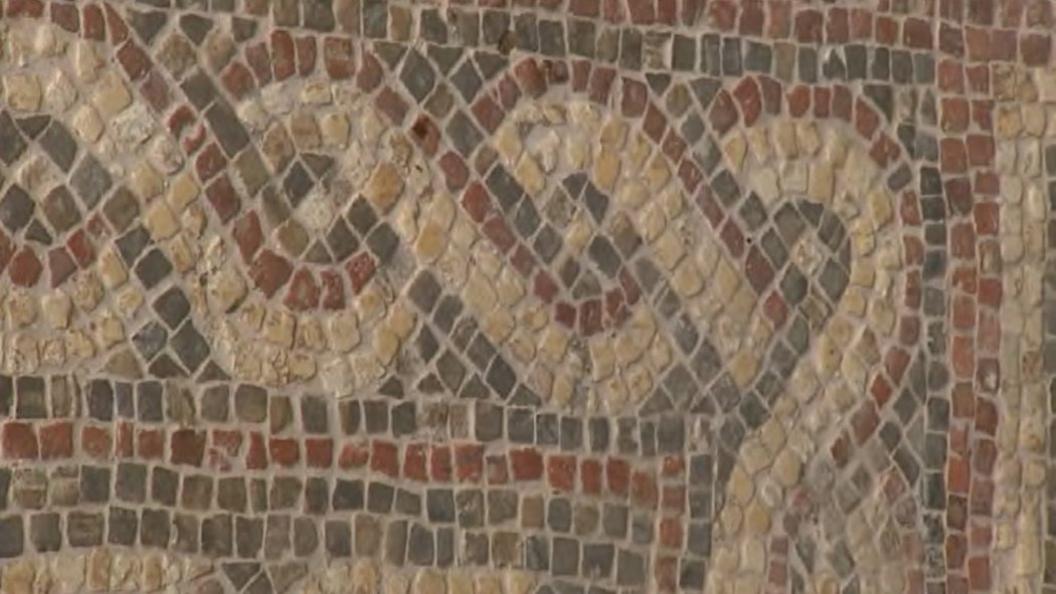'Priceless' Roman mosaic goes on show in St Albans
- Published

A 'priceless' Roman mosaic will go on display in St Albans for the first time in 48 years
A 1,800-year-old Roman mosaic will go on public display for the first time in almost half a century.
Archaeologist Sir Mortimer Wheeler discovered it in the 1930s on the site of the ancient Roman city of Verulamium, now St Albans.
The priceless work became the centrepiece of the City Hall theatre - now the Alban Arena - but has been covered up for the past 48 years.
It will go on show during refurbishment work at the venue from Monday.
Annie Brewster from St Albans City and District Council, said: "This is a rare and fantastic chance to view a mosaic that is part of St Albans' history.
"Each of the mosaics that have been uncovered at Verulamium Park has its own special colours, symbols and patterns. This one is very intricate and striking - it is hard to take your eyes off it."
Hidden gem
The mosaic measures 3.6 square metres and is made up of hundreds of tiny white, brown and red tiles in an intricate design featuring many different shapes and symbols.
For almost 50 years, many theatre-goers have been unaware they were walking on history as the mosaic was hidden under a protective carpet.
The rarely-seen work, which dates back to the second or third century AD, will be on display until 12 August.
There will also be talks by Simon West, the district archaeologist, and David Thorold, curator of collections at Verulamium Museum.
Ms Brewster added: "I am sure hundreds of people will want to take advantage of this opportunity to see it close up.
"In the longer term, we have to move this mosaic for a permanent display rather than have it hidden from view and will be looking to raise funds to do that."
- Published17 April 2016

- Published22 November 2013
